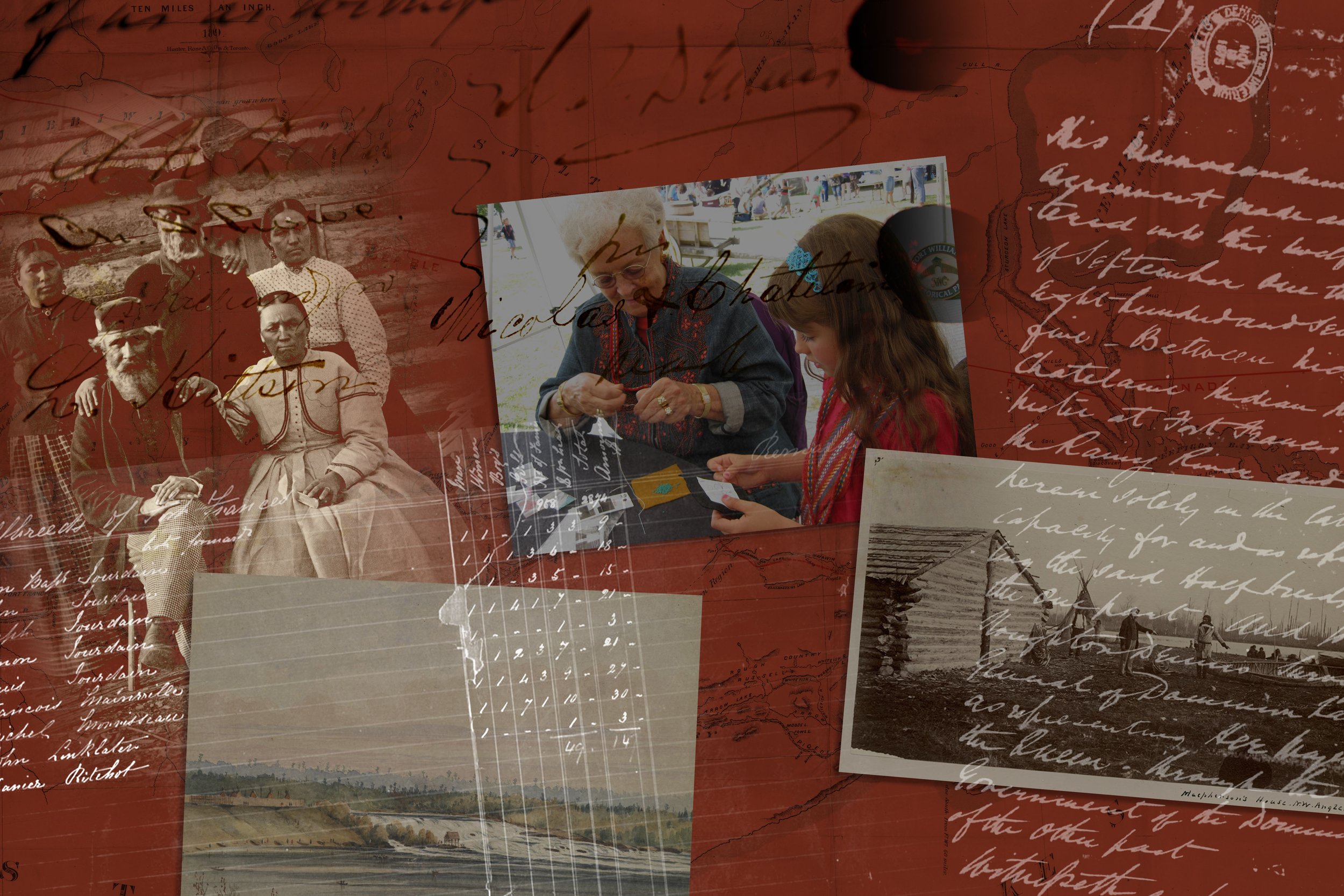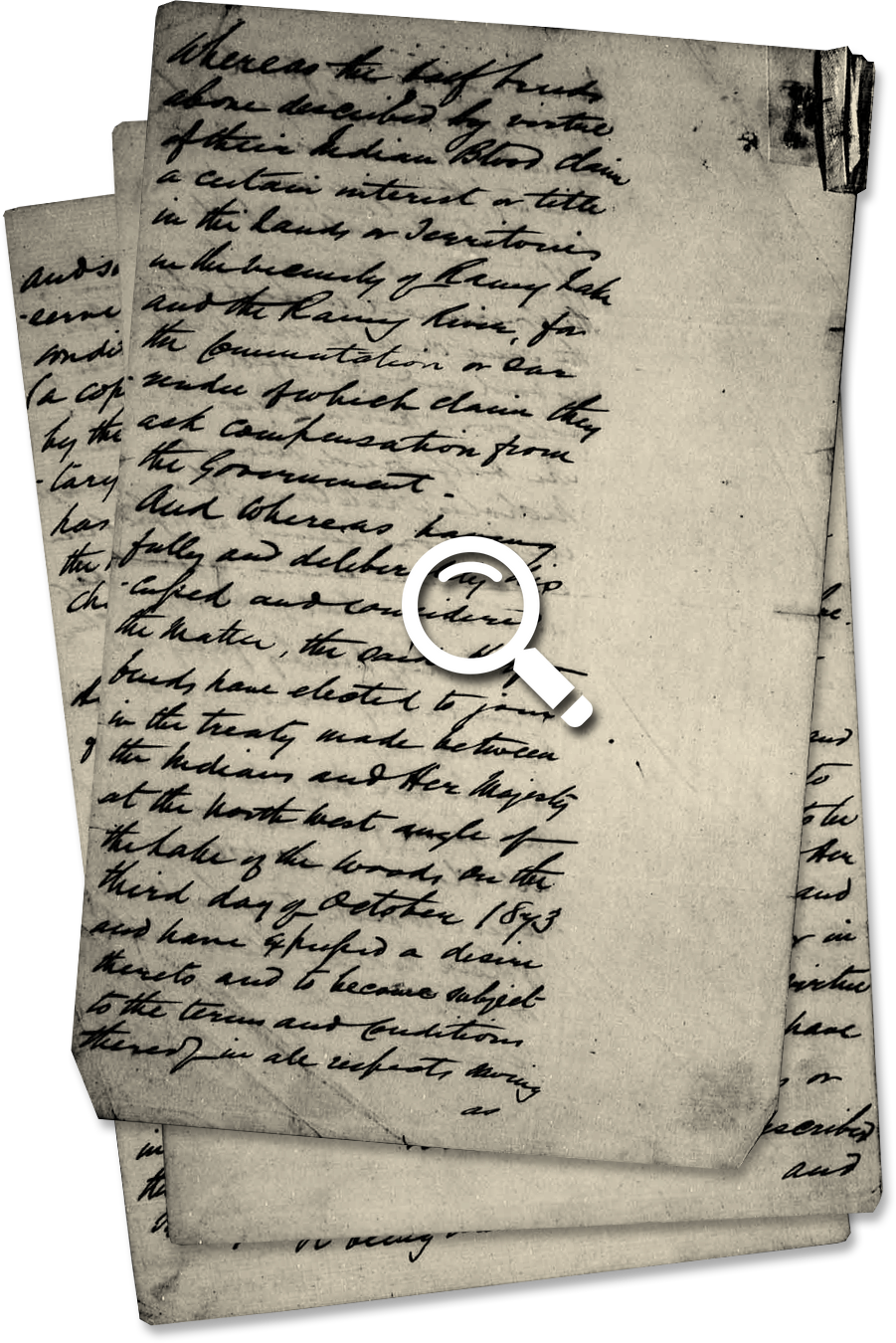
Our Adhesion
The Halfbreed Adhesion to Treaty No. 3
Métis were present as interpreters and witnesses when the Anishinaabe and Canada negotiated and signed Treaty No. 3 in 1873. While the Anishinaabe chiefs advocated for Métis inclusion in Treaty No.3 when it was signed in 1873, Canada refused, and the Métis were excluded. Métis leaders in Northwestern Ontario, such as Nicholas Chatelaine, spent the next two years asking the government to join treaty. Finally, in 1875, a distinct group of Métis, referred to as “Half-breeds of Rainy River and Rainy Lake,” signed the “Halfbreed Adhesion to Treaty No.3” which brought them into Treaty No. 3.
Our Adhesion was signed on September 12, 1875, by Nicholas Chatelaine who represented the Métis as their “Chief.” Our Adhesion promised our community treaty payments, reserve land, farming equipment, clothing, and schools. It promised our community would be free from military service and have the freedom to hunt and fish where they pleased. The Halfbreed Adhesion also came with promises of reserve lands for Métis on Rainy Lake, which were mapped out next to the reserves set aside for Chief Little Eagle’s band (known today as Couchiching First Nation).
Canada did not honour the Halfbreed Adhesion. In 1876, the passing of the Indian Act created colonial policies that allowed Canada to backtrack on its promises made in the Halfbreed Adhesion. In order to receive treaty benefits, some Métis opted to joined First Nations bands. Many others did not, instead fighting for recognition as Métis, not as “Indians.”
The Northwestern Ontario Métis Community continues to fight for the resolution of the outstanding claims related to the 1875 Adhesion. However, the community is not seeking the return of or interest in any specific reserve lands within what is now Couchiching First Nation. The Northwestern Ontario Métis Community is committed to ensuring that the rights and interests of First Nations and private landowners are respected.

